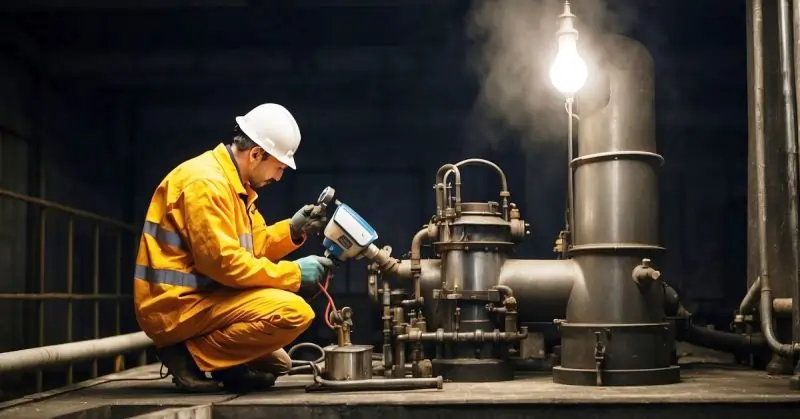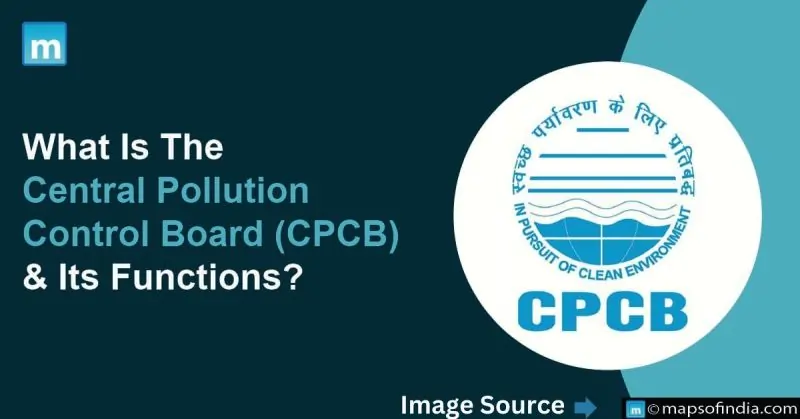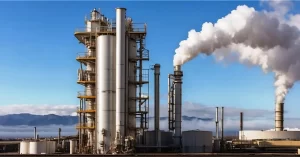Table of Contents
Stack Emission Monitoring and Testing
Stack emission monitoring, also known as stack emission testing, stack sampling, source emission monitoring, or source testing, is the crucial process of assessing the amount and types of pollutants that industrial activities release into the atmosphere. These emissions, which can originate from various industrial sources, might be in the form of solid particles, gases, liquid substances, or a mix of organic and inorganic materials. This monitoring plays a vital role in identifying and quantifying the pollutants to ensure environmental compliance and safeguard air quality.
Understanding Stacks: Definition and Function
A stack, commonly known as a chimney, serves the purpose of releasing hot air, emissions, and particulate matter from sources like boilers and flue gases into the atmosphere at significant heights. By dispersing pollutants at these elevated levels, the contaminated air spreads over a wide area, ensuring that ground-level concentrations remain within safe limits and pose no threat to humans, animals, and plants. There are various kinds of flue-gas stacks, each designed according to the type of fuel injection system they accommodate. Examples include DG set stacks, flue gas stacks, process stacks, furnace stacks, boiler stacks, and chimneys.
Calculating Minimum Stack Height:
A straightforward formula for calculating the minimum stack height for DG sets, irrespective of the industry, is:
H = h+0.2 x √ KVA
Where:
- H = Total height of stack in meters
- h = Height of the building in meters where the DG set is installed
- KVA = Generator capacity in KVA
This formula provides a clear guideline for determining stack height, ensuring effective emission control. Here are the minimum stack heights based on generator capacity:
| Generator Capacity | Minimum Total Height of Stack |
|---|---|
| 50 KVA | Building height + 1.5 meters |
| 50-100 KVA | Building height + 2.0 meters |
| 100-150 KVA | Building height + 2.5 meters |
| 150-200 KVA | Building height + 3.0 meters |
| 200-250 KVA | Building height + 3.5 meters |
| 250-300 KVA | Building height + 3.5 meters |
This table provides a straightforward guideline for determining the necessary stack height to ensure effective emission control for different capacities of diesel generators.
Key Essentials for Conducting Stack Emission Monitoring & Testing
- Assessing the type and amount of air pollutants released from a source.
- Evaluating pollutant control equipment’s performance before and after its setup.
- Checking the pollutant control equipment’s efficiency under specific conditions.
- Matching test outcomes with emission standards to identify necessary measures.
- Analyzing emission variations in response to changes in processes or materials.
Essential Components of Stack Monitoring Equipment
A comprehensive stack monitoring kit should include the following essential components:
- Pilot Tube: A modified S-type pilot tube, crafted from SS 204 or an equivalent material, to measure flow velocity.
- Sampling Probe: Constructed from SS 204 tubing of an appropriate diameter for sample collection.
- Nozzles: A variety of nozzles made from SS 305 or similar material, with internal diameters designed to accommodate the full range of stack velocities.
- Thimble Holder: Used for holding filter paper during sampling.
- Thermocouple: A thermocouple sensor capable of measuring temperatures ranging from 0 to 600°C.
- Mounting Flange: Mild steel flanges with precise openings for mounting thermocouple sensors, sampling tubes, and pilot tubes.
- Panel Box Sides: Equipped with arrangements to securely house a stopwatch, manometer, rotameter, and other necessary instruments.
- Back Panel: A cold box featuring 6 impingers for sample collection.
- Inclined-cum-Vertical Manometer: Capable of measuring velocity in the range of 0 to 30 m/sec.
- Rotameter: Designed for 0 to 100 ppm particulate monitoring and 0 to 3 lpm gaseous monitoring.
- Stop-Watch: A precision instrument with a 0 to 60-minute range, one-second readout, and hold feature.
- Impingers: Includes 4 impingers with a 100 ml capacity and 2 impingers with a 300 ml capacity, accompanied by an ice box for sample preservation.
- Vacuum Pump: For creating a suction force necessary for sample collection.
- Dry Gas Meter: To accurately measure the volume of gas sampled.
- Pump Housing: Enclosure for the vacuum pump, ensuring its protection and functionality.
These components collectively ensure the stack monitoring equipment is equipped to accurately assess emissions and environmental parameters from industrial stacks, facilitating compliance with environmental regulations and aiding in pollution control efforts.
Procedure for Monitoring and Testing Stack Emissions



General Considerations and Preliminaries for Stack Emission Monitoring
Regulations and Requirements:
- Framework Compliance: Adhere to specific regulations and standards (e.g., EPA Method 5, European EN standards) that outline the stack emission monitoring and testing procedure.
- Limitations and Restrictions: Address any constraints these regulations impose on the procedure’s applicability.
- Guideline Adherence: Emphasize the necessity of thoroughly following these guidelines to achieve reliable and legally sound results.
Source Characterization:
- Emission Insights: Understand the emission types, expected concentrations, and associated hazards.
- Equipment Overview: Gather details about the stack and emissions control equipment.
- Expert Consultation: Engage with specialists for tailored advice on complex issues.
Pre-testing Activities:
- Permits and Approvals: Secure all necessary permissions from relevant authorities.
- Coordination with Plant Personnel: Arrange the testing schedule to ensure conducive conditions and access.
- Equipment Preparation: Assemble and calibrate required equipment following manufacturer and standard guidelines.
- Safety Briefing: Conduct comprehensive safety instructions for all team members.
Sampling and Measurement:
Site Selection:
- Optimal Location: Identify a sampling site that accurately represents the flue gas composition, considering flow dynamics and gas stratification.
- Traverse Point Guidance: Follow standards or expert advice for traverse point determination.
Isokinetic Sampling:
- System Utilization: Implement an isokinetic sampling system to align with the flue gas velocity, ensuring representative sample collection.
- Material and Filter Selection: Choose probes and filters suitable for the specific pollutants.
Continuous Monitoring:
Real-time Data: For certain pollutants, consider systems that offer continuous monitoring, adhering to performance and calibration standards.
Stack Gas Characterization:
Flue Gas Analysis: Measure critical flue gas parameters using calibrated instruments, following established methods.
Emission Rate Calculations:
Data Application: Calculate emission rates using collected data, presenting results as per regulatory standards.
Quality Assurance and Data Management:
Chain of Custody:
Sample Integrity: Maintain a documented chain of custody for all samples to ensure data reliability.
Calibration and Verification:
Regular Calibration: Calibrate equipment regularly against traceable standards and perform necessary system checks.
Data Validation and Reporting:
Comprehensive Reporting: Thoroughly document and report the monitoring process, including QA/QC measures.
Additional Considerations:
Safety:
Priority Measures: Ensure safety is paramount, with appropriate PPE and adherence to safety protocols.
Reporting to Regulatory Agencies:
Timely Submission: Submit detailed and accurate test reports to agencies within the required deadlines.
Continuous Improvement:
Procedure Review: Regularly assess and refine testing procedures for improved accuracy, efficiency, and cost-effectiveness.
Determining Molecular Weight
The molecular weight of a gas can be identified by introducing a specific quantity of the gas into a gas chromatograph or an Orsat apparatus, with the prerequisite that its moisture content is measured. By understanding the composition of the gas, its molecular weight can be accurately calculated.
To ascertain the average molecular weight, the following formula is utilized:
M=∑i=1n(xiMi)
Here, xi represents the mole fraction and Mi denotes the molecular weight of each component within a multi-constituent mixture.
Determining Velocity
After connecting the Pitot tube, both dynamic and static pressures are measured using a manometer. Additionally, the temperature within the duct is recorded. The velocity of the gas and the volume of air passing through can then be calculated using the following formula.
The formula for determining the velocity of gas, based on the measurements obtained from a Pitot tube and considering the temperature and pressure conditions, is given by:
V=ρ2×(Pd−Ps)
Where:
- V is the velocity of the gas,
- Pd is the dynamic pressure,
- Ps is the static pressure, and
- ρ is the density of the gas, which can be adjusted for the measured temperature and pressure conditions to provide a more accurate calculation.
Determining Moisture Content
The moisture content in a gas stream can be assessed by measuring the dry and wet bulb temperatures and then consulting a psychrometric chart for interpretation. Alternatively, the condenser method is also effective for a wide range of gas streams and is relatively simple to execute.
Boiler & DG Sets Emission: CPCB Stack Monitoring Guidelines



For detailed information on emission monitoring parameters and their respective limits for boilers and DG sets as outlined by the CPCB, please see the following table:
| SR.No | Stack Monitoring Parameters for Boilers and DG Sets | Stack Monitoring Limits / Standards As per CPCB (in mg/Nm3) |
|---|---|---|
| 1. | Particulate Matter (PM) | 150 |
| 2. | Sulphur Dioxide (SO2) | 40 |
| 3. | Oxides of Nitrogen (NOx) | 25 |
| 4. | Total Fluoride (F) | 25 |
| 5. | Mercury (Hg) | 0.2 |
| 6. | Chlorine (Cl) | 15 |
| 7. | Hydrochloric Acid Vapor & Mist (HCl) | 35 |
| 8. | Sulphuric Acid Mist (H2SO4) | 50 |
| 9. | Carbon Monoxide (CO) | 1% |
| 10. | Lead (Pb) | 10 |
FAQ on Stack Emission Monitoring and Testing
Q: What is stack emission monitoring?
A: It’s the process of measuring pollutants released from industrial stacks to ensure they meet environmental standards.
Q: Why is stack emission testing important?
A: Testing helps identify pollution levels, ensuring compliance with laws and protecting public health and the environment.
Q: How often should stack emissions be tested?
A: Frequency depends on regulations and industry type, but annual testing is common for continuous monitoring.
Q: What equipment is used for stack emission testing?
A: Key tools include Pitot tubes, sampling probes, gas analyzers, and particulate filters to accurately measure emissions.
Conclusion
To sum up, stack emission testing and monitoring are essential for maintaining environmental compliance and protecting public health. Industries can efficiently monitor and reduce the impact of their emissions by following strict testing processes, using precise technology, and carefully choosing suitable sampling sites. This promotes more environmentally friendly and sustainable company practices in addition to helping to meet regulatory requirements. Any firm aiming to lessen its environmental impact must comprehend the complexities of stack emission monitoring. We can all help create a more sustainable future, healthier environments, and cleaner air by adopting these activities. Use this resource as a springboard for more knowledgeable and responsible environmental stewardship.
